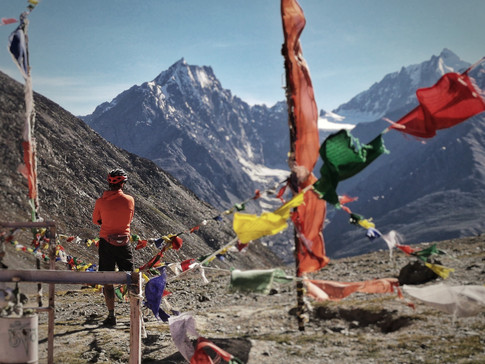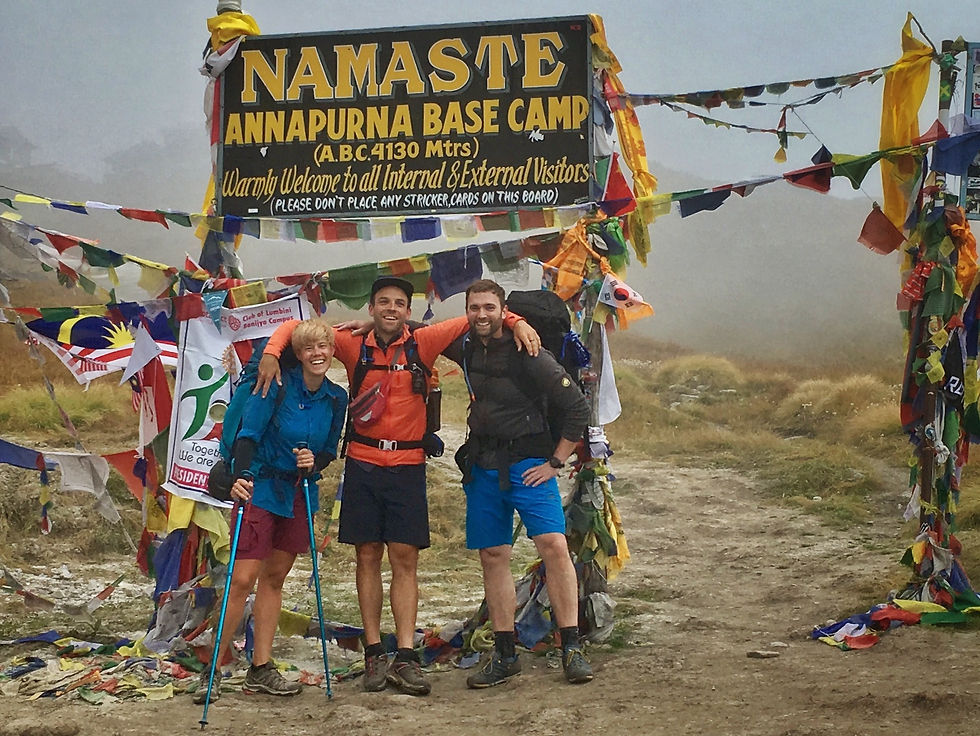North West India - "Julley! Julley!" The Spiti Valley & Kinnaur
- sarabukies

- Apr 22, 2020
- 5 min read
Updated: Apr 27, 2020
SEPTEMBER 2019
It was the Spiti Valley that first drew our attention to cycling in India so we had quite high expectations before riding over Kunzum La Pass coming from the Leh-Manali Highway to enter this cold desert mountain valley that translates as 'the middle land' because it lies between Tibet and India.

We often had to deal with thunderstorms in Kyrgyzstan but India had been calm so far. This changed when we left the Leh-Manali Highway shortly after Koksar and headed towards the Spiti Valley. What also changed was the surface of the road. From relatively good tarmac back to rough gravel which made us a lot slower again and so the clouds came closer quickly. We made it to a small cluster of simple stone buildings called Chottha Dara just before the rain kicked in. To our big surprise we were greeted by a group of four Swiss alpinists who stayed there for a few days to climb some massive walls that no one had climbed before. We pitched our tent next to theirs and spent an interesting evening listening to their stories from the high mountains and enjoying delicious food.

The rain during the night wasn't strong and the next morning we woke up to blue skies again. Perfect conditions to ride over our last high mountain pass in India, the mighty Kunzum La (4590 m). We totally loved the climb up to the pass, with smooth gravel and hardly any traffic. Still, we were exhausted when we made it to the top but seeing all the prayer flags in the late afternoon sun gave us a deep feeling of satisfaction. Unfortunately the descent was brutal. We expected an easy ride down to the first settlement, but instead it took us ages to get there partly because we were tired but also because the road was more challenging. Shortly before dark we made it and accepted the first overpriced room for the night exited what the next days would bring.

The next day had some surprises in store for us: After the super rough descent from the day before we followed a recommendation from locals and left the main road to see if the road on the other side of the river was really paved and a better option. It turned out that it was not only a lot smoother, but also had a lot more to offer in terms of landscape.
In Kaza, the somewhat capital of Spiti Valley, we headed for a hotel, which Andreas assumed to be owned by a warmshower-host (something similar to couchsurfing, just for cyclists). In fact, we were allowed to stay there for free. We could hardly believe it and enjoyed our 3 restdays at this wonderful place to the max. Thank you Karan for having us!
Another surprise came in the form of a huge Saint Bernard dog. Simba had been adopted by Karan and was affectionately called "the most stupid dog of Spiti Valley" by him. Extremely possessive he barked at everyone who entered the hotel and was not allowed to be stroked or touched by anyone. Unless you belong to a small circle specially chosen by Simba. Lucky us!

In Kyrgyzstan we had stayed in quite a few homestays, because in the villages they were often the only option apart from the tent. Not so in the North of India, where you find countless guesthouses, hotels and dhabas. When we were told to take the detour to Lahlung and stay at a homestay, we could not not do it, as we really wanted to sleep in one of these typical traditional tibetan style white houses at least once. So we left the main road shortly after Kaza to ride into a side valley with our destination being a small picturesque village that looked like from a different time. The place we chose was a three generations home and there was an other couple, local tourists from the South of India, staying there as well. While having dinner and breakfast together they translated a lot of what our host told us about her family, the place she lives and the changes Spiti Valley experiences nowadays. We also discussed questions that we had concerning everyday life, society and culture in India in general, which we could never have if he had stayed in a hotel next to the main road. After a quiet and peaceful night's rest we left Lahlung and headed back to the mainroad via Dankhar, where there is a monastery that is built on a 300-metre high spur overlooking the valley. Next stop would be Tabo.

Before we left the Spiti Valley, one last big challenge was waiting for us. Because of landslides the road down in the valley is no longer passable, so we were forced to climb another 1000m and ride via Nakho. This road didn't seem very safe to us either, everywhere there were stones on the road and again and again there were signs warning us about shooting stones. Our efforts got rewarded the next day with a fantastic downhill for breakfast. When we crossed the bridge at the check point and left the Spiti Valley, we were somehow sad and so we intend to visit this valley with its wonderful people again sometime. Julley! Julley!

Bike touring isn't always 'living the dream', although it might seem like it when looking at pictures and posts of people doing so. The day we left Spiti Valley we had a big argument about where to spend the night. This resulted in a stage that was way longer than planned, arriving after dark and not speaking to each other until the next morning. We even considered riding separately for a couple of days which in the end didn't happen. People sometimes tell us that we're on long holidays, but we don't feel so: We just gave up our previous life and live differently now. That also means that we face similar situations we did before, since bike touring is our every day life now. That being said, we love this kind of stuff and prefer it to what we did before. After this exhausting stage to Rekong Peo we chose to spend the following two days nearby in Kalpa and rest before continuing towards Shimla.

"Let's take the bus, I don't feel like riding in a lot of traffic, fog and having to do an endless climb today. We started too late for that!" "Ok, if we can stop a bus that takes us and the bikes, why not?" That was our conversation at lunch, 100 km before Shimla in a small village on the main road. 2 days before we had still been in the barren, beautiful Spiti valley, now mosquitoes buzzed around our legs and instead of dogs it was monkeys, who suddenly appeared next to the road. The air was super humid and there were plants everywhere, countless plants. In short: the change into the tropical climate and the more populated areas of India was a bit violent. Since we have never set ourselves the goal of cycling from A (Europe) to B (Asia) and our bicycles are more than just a means of transport to us, we are not forced to ride every route just so that we have covered it by bike. Instead of winding down main roads, we rather want to explore what is off the beaten track and occasionally treat ourselves to a bus trip, a flight or a train ride. One could also accuse us of cherry-picking... This day we took the bus to Shimla and didn't regret doing so.




























Comments